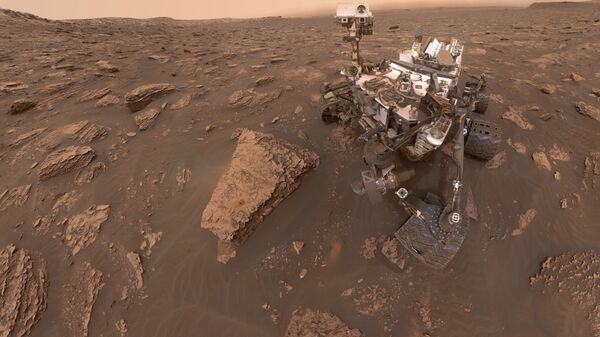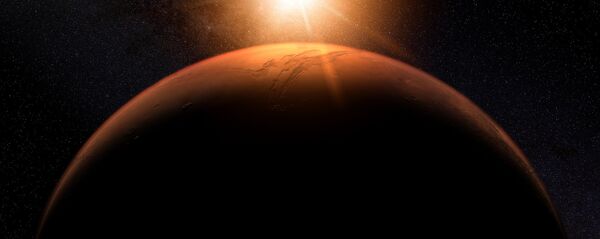The University of Central Florida is now selling Martian red dust for just US$20 a kilo "plus shipping," according to its official statement. But there is a nuance, however: the commodity is not directly delivered from Mars, but is produced in a laboratory.
Astrophysicists have devised a red soil dubbed “Mars simulant” to make it possible to test how crops might grow in the still alien, but currently studied, Martian conditions and which equipment would be needed to this end, to conclude the years of the highly scrutinized quest.
The scientists derived their dust formula from the chemical signature of the soils actually found on Mars, most specifically the best characterized wind-blown deposit Rocknest at Gale crater, which was collected by the Curiosity rover.
Look closely, you can see a little lost rover, asleep in the Martian dust. https://t.co/DEXgVEXTek pic.twitter.com/OsWOuvtN92
— Chris Hadfield (@Cmdr_Hadfield) 26 сентября 2018 г.
#Meteor #Crater (#Barringer) in #Arizona, doubling as a crater for a #Martian scene: a dust storm on the #RedPlanet. #scicomm #Mars #astronomy #spaceart #sciart # pic.twitter.com/heWI1LFvHl
— Mark A. Garlick 🌖 (@SpaceBoffin) 1 октября 2018 г.
Exhaustive information on the subject is outlined in an abstract published in the space exploration journal Icarus, which even invites its readers to come up with their own version of Martian soil thanks to the shared “mineral recipe and production methods.” The paper’s lead author, Kevin Cannon, noted that most of the “ingredients” are available on Earth, although “some are very difficult to obtain.”
READ MORE: 'Having People Go to Mars Definitely in Our Future Maybe 20 Years Away' — Prof
Those who prefer not to take pains devising an exclusive soil can order a kilo of a ready-made one directly from the university, with researchers saying 30 orders have already been placed.
NEW: Martian Haze – Even a global dust storm is an opportunity to learn how it can change the surface, especially compared to previous images.
— HiRISE (NASA) (@HiRISE) 21 сентября 2018 г.
NASA/JPL/University of Arizonahttps://t.co/34RlEowR5M pic.twitter.com/ntiPJdI6In
NASA’s Curiosity Mars rover, housed in the 96-mile-wide (154 kilometers) Gale Crater, is known to have been keeping track of notorious Martian dust storms in recent years, noticing just recently this summers’ monster dust cloud as a localized event near Perseverance Valley, a landform being explored by the agency’s Opportunity rover.


